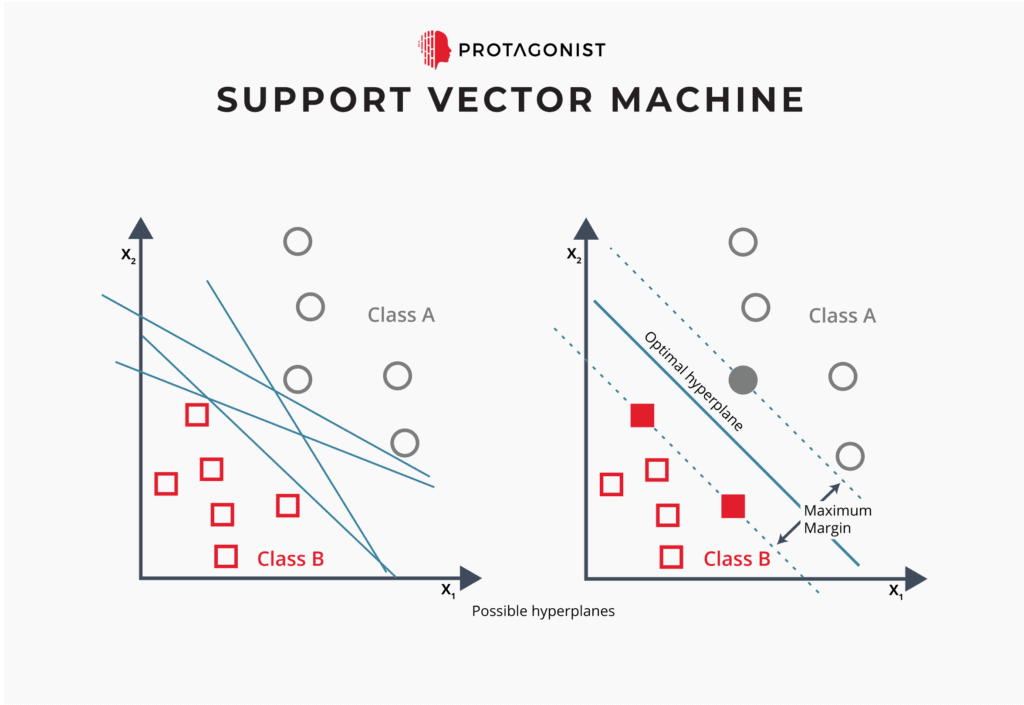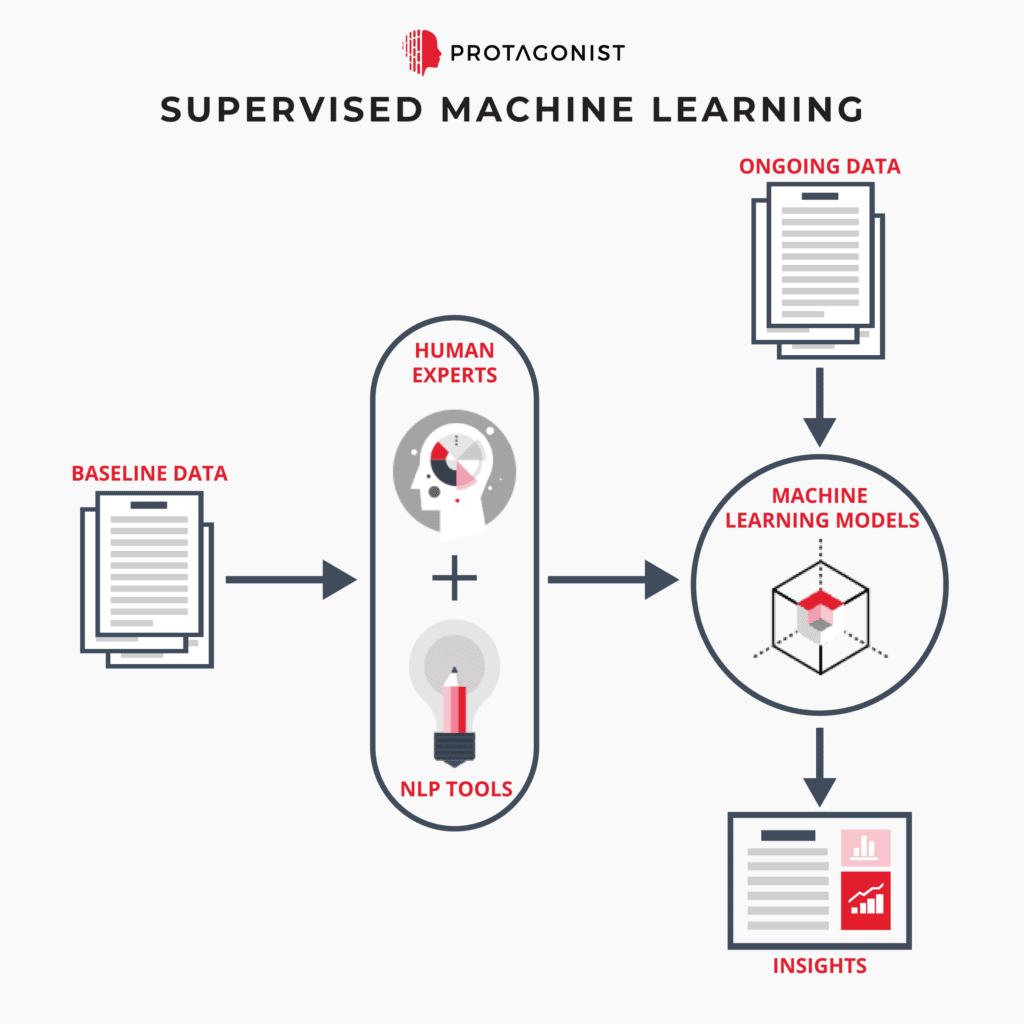What is Machine Learning?
Increasingly, marketers, researchers and change agents are turning to leading-edge technology to enhance their craft. You’ve probably assumed that newer capabilities like Machine Learning should be part of your toolkit, but you may wonder how you can integrate Machine Learning into your domain. One of the areas Machine Learning can help is in understanding human expressions at scale—that can be on social media, in product reviews, in response to open-ended survey questions, and from other sources. To do Narrative Analytics at Protagonist, we use Machine Learning every day to understand these kinds of expressions.
Put simply, Machine Learning is a kind of technology where algorithms enable computers to learn how to perform tasks more accurately and effectively. In the context of understanding human expression, that means classifying data points accurately into particular classes or categories. For instance, as represented in the following graph, the machine can classify social media posts into Class A (“climate change is human caused”) or Class B (“climate change is a natural development”). Mathematically, it has to draw the line in the right place to separate those two kinds of expressions—no small feat, given that human expression is nuanced and varied.

Achieving accurate classification often requires an approach known as Supervised Machine Learning, where human beings “supervise” the computer by creating training models of many data points (inputs) and the classes they belong to (outputs). From the training models, the machine learns how to accurately classify other data points, for us that can mean hundreds of millions of expressions. (We’ve found that Unsupervised Machine Learning, where the machine is given only inputs and left to come up with its own classes, is less helpful in understanding nuanced human expression).

Besides selecting Supervised or Unsupervised approaches, there are other key decisions to make when applying Machine Learning to human expression–one of the most important is which algorithm to use. One algorithm we often utilize is Support Vector Machine (SVM). SVM classifies data points (like the ones in the graph above) by maximizing the total distance between the dividing line and all the data points to be classified. In some contexts, other algorithms may work better, so selecting the right algorithm to meet your needs is important.
The Bottom Line
Bottom line—Machine Learning makes it possible to understand human expressions at scale—from customers, employees, specific audiences or the general public. That understanding enables our clients to market more effectively, build better company cultures, and help move society forward. If you’d like to learn more about how Machine Learning can help you, reach out to us at info@protagonist.io.


